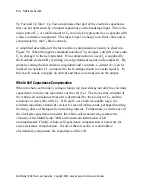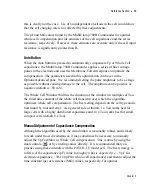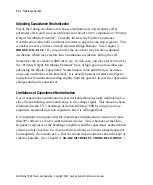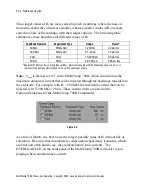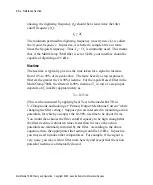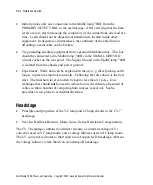
Reference Section
•
85
of the microelectrode. In practice, this means using patch electrodes where
possible, or using sharp microelectrodes with minimal capacitance. (See
Chapter 4,
SHARP MICROELECTRODE RECORDING
).
•
Electronically neutralize C
in
.
The second approach has been implemented in the MultiClamp 700B in two ways.
Primary Method for Neutralizing C
in
A special technique is used in the CV-7 headstage to keep the contribution to
C
in
from the input amplifier as small as possible. The technique is known as
“bootstrapping”. Unity gain feedback is used to reduce the component of stray
capacitance that exists between the amplifier input and its power supplies and
case. Sophisticated circuitry is used to superimpose the unity-gain output of the
buffer amplifier back onto its own power supplies and the headstage case,
fixing the voltage drop across C
in1
to a constant value, thereby preventing
current flow through C
in1
. The effective value of C
in1
is thus reduced to well
below its real value. This eliminates the high-frequency current loss through
the power supply capacitance, thereby increasing the bandwidth. Since the
power supply capacitance is present whether or not the power supply is
bootstrapped, there is no noise penalty due to implementing this technique.
Secondary Method for Neutralizing C
in
In some cases the steps discussed above may not be sufficient to decrease the
RC time constant of the voltage-recording microelectrode, particularly in
situations where high resistance microelectrodes must be used. For this reason
an effective, though less desirable, technique is provided that can electrically
reduce the
effective
magnitude of C
in2
. The technique is known as “capacitance
compensation”, “negative capacitance” or “capacitance neutralization”. A
compensation amplifier at the output of the unity gain buffer drives a current
injection capacitor connected to the input. At the ideal setting of the
compensation-amplifier gain, the current injected by the injection capacitor is
exactly equal to the current that passes through C
in2
to ground.
Chapter 5










